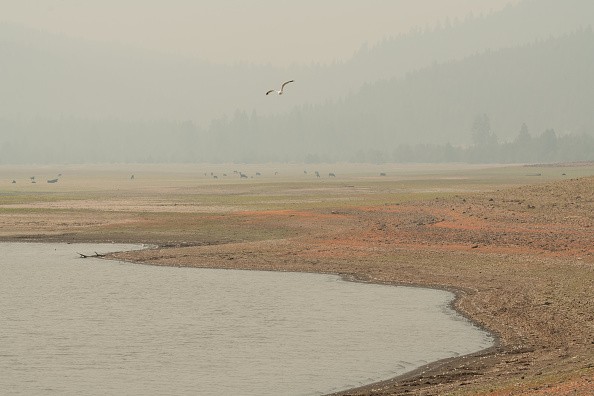Drought conditions in the US Pacific Northwest are expected to get even worse this year than in the past two years, which saw diminishing reservoirs, massive wildfires, and substantial cuts to agricultural irrigation.

Severe Drought Across Oregon, Idaho
Experts from the states of Oregon, Washington, and Idaho spoke at a press conference held by the National Oceanic and Atmospheric Administration (NOAA), saying the region should get ready now for severe drought, wildfires, and record-low stream flows that will harm salmon and other sensitive species.
According to the U.S. Drought Monitor, 74% of the Pacific Northwest is suffering from drought, with nearly 20 percent in extreme or exceptional drought.
This winter's storms, which regularly replenish water levels and build up a snowpack to feed streams and rivers, were thwarted by an unusual ridge of high pressure off the West Coast of the United States, according to scientists.
At this time last year, Oregon was doing quite a bit better, said Larry O'Neill, Oregon's state climatologist. According to O'Neill, one of the points is to make people aware that Oregon is going through some tough times this summer, he said. Oregon is currently in a state of increased concern because of this year's drought, as per Phys.org.
A 22-year megadrought worsened last year to the point that the region as a whole is now experiencing its driest period in at least 1,200 years, according to a research published only last month. Human-caused climate change is responsible for 42% of this megadrought, according to a new study.
Places to Experience Worst Impacts From the Drought
The worst effects of this summer's drought will be felt in Oregon, where critical winter storms that normally moisten central and southern Oregon and southern Idaho will be missed. In the Pacific Northwest. According to O'Neill, scientists are discussing the origin of the shift in the weather pattern and some feel that a warmer northern Pacific Ocean could be a factor.
Two years of record-breaking dryness have swept through seven counties in central Oregon, according to the National Drought Monitor (NDM). As a whole, Oregon has seen the driest two-year stretch since 1895, according to researchers.
Irrigators who rely on reservoirs in Oregon to supply water to their crops face major challenges as reservoir levels fall between 10% and 30% from last year's levels, according to the Oregon Department of Agriculture.
According to Idaho Department of Water Resources official David Hoekema, southern Idaho is also suffering from severe drought, and a key reservoir in the Boise Basin has water supply levels below average.
In his words, it takes more than just an average year to recover, he predicted that this year will be anything but typical. Southern Idaho is expected to remain in a state of drought for the time being, with chances that the condition will worsen, according to AP News.
Water Crisis Due to Drought
Water wells in southern Oregon's Klamath Basin are running dry following a water crisis that left dozens of households without water last summer.
There has been a significant decrease in underground aquifer water levels throughout Oregon this winter, according to Ivan Gall, field services division administrator for the Oregon Water Resources Department.
Farms and ranches in the basin didn't get any federally owned irrigation water last summer because of drought conditions, so irrigators had to pump significantly more water from the subterranean aquifer to keep their operations going, Gall explained.
Anti-government protesters briefly camped out along an irrigation canal and threatened to open the water valves, prompting global attention to the water crisis.
Related Article : Western US is Experiencing the Worst Drought Since Medieval Times
For more news, updates about drought and similar topics don't forget to follow Nature World News!
© 2025 NatureWorldNews.com All rights reserved. Do not reproduce without permission.





